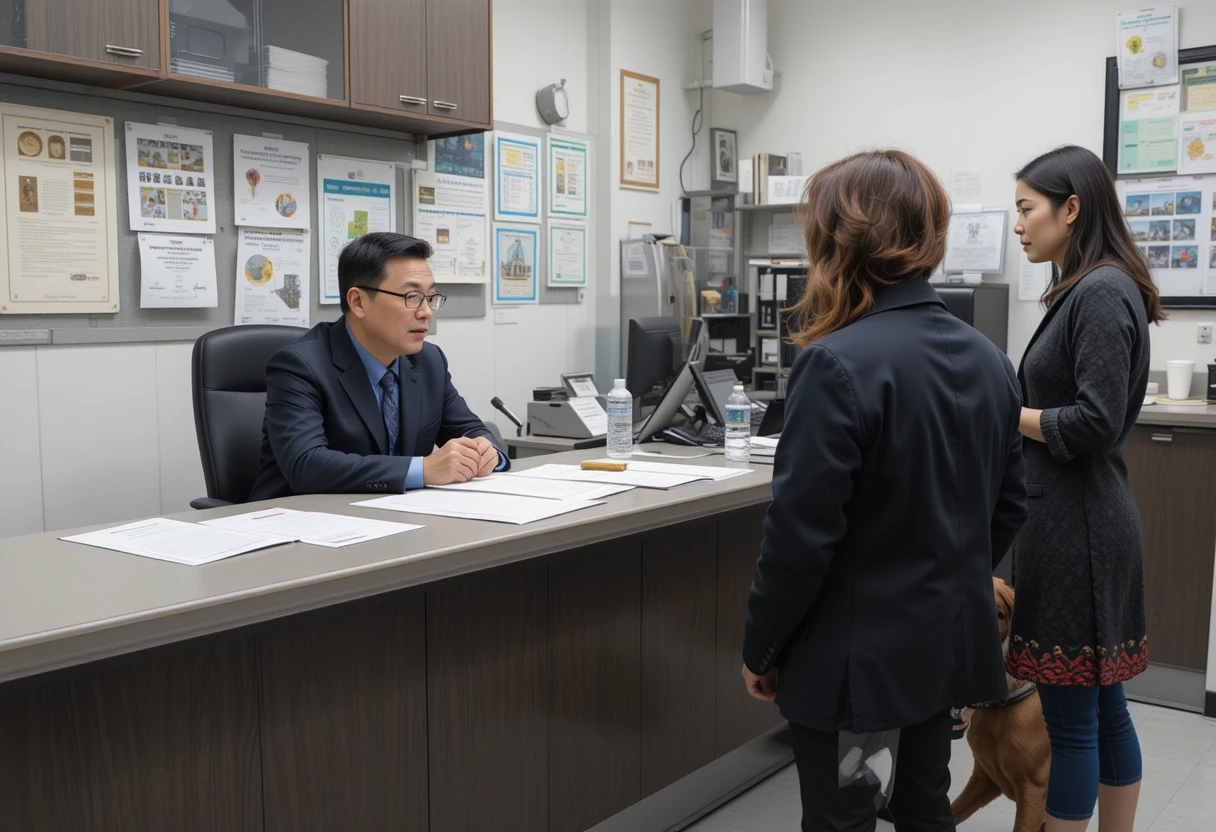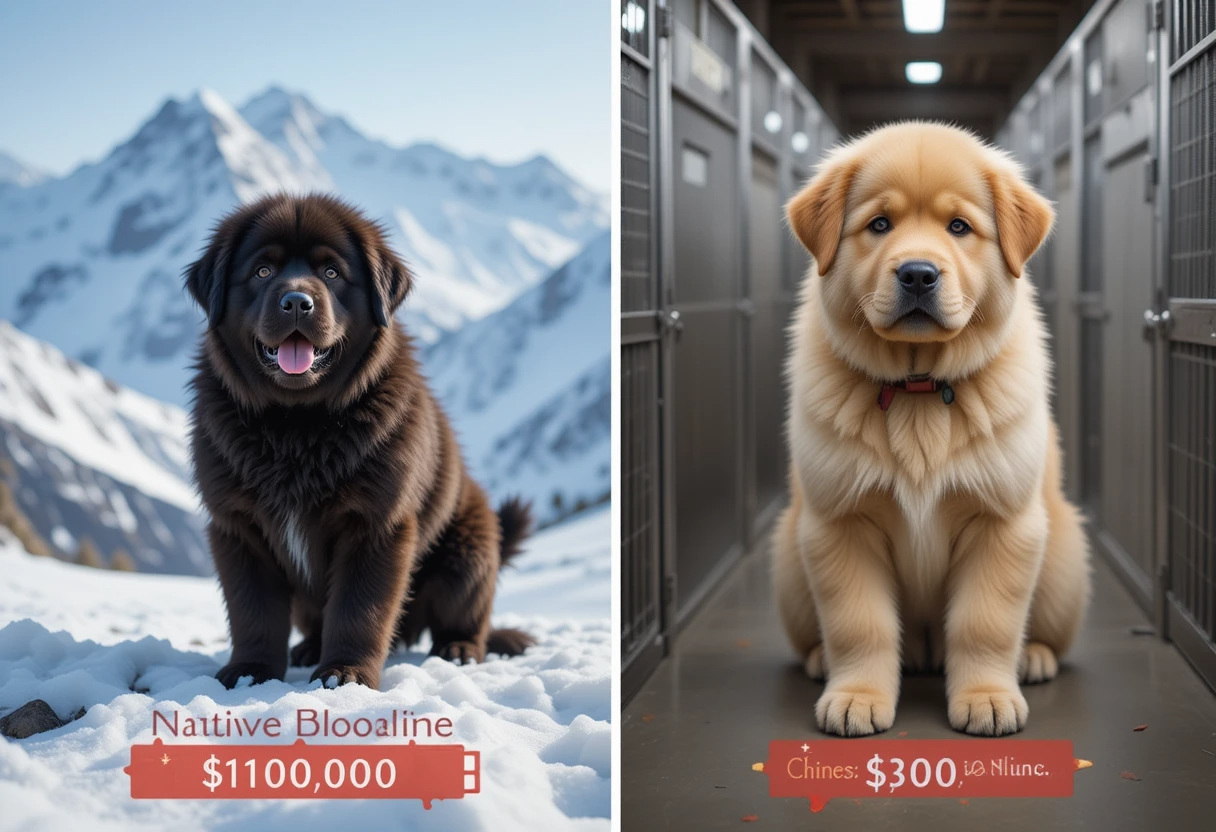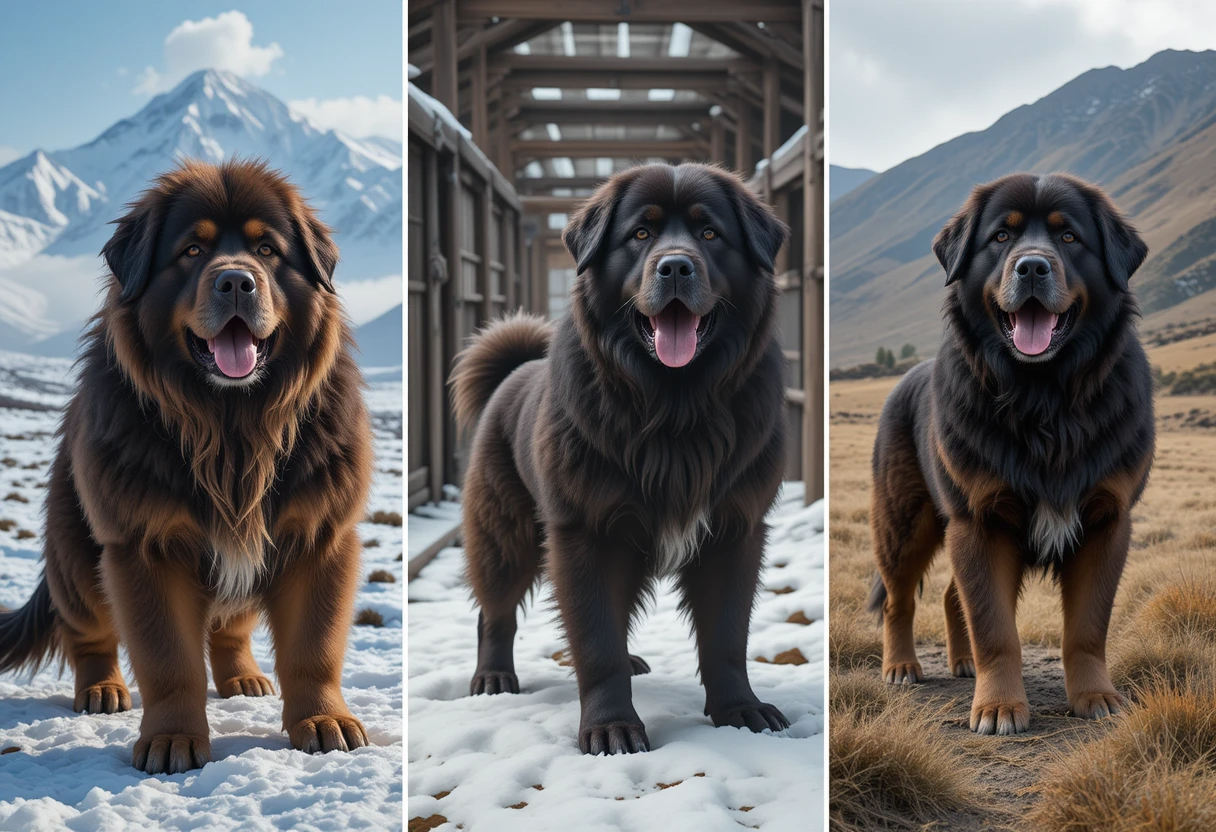Finding the right Chinese Tibetan Mastiff breeder can be one of the most crucial decisions you’ll make as a prospective owner of this magnificent breed. With the breed’s complex history, varying bloodlines, and significant price differences between native and Chinese-bred lines, understanding what to look for in a reputable breeder becomes paramount.
This comprehensive guide will walk you through everything you need to know about Chinese Tibetan Mastiff breeders, from identifying quality breeding practices to understanding the differences between bloodlines.
Understanding the Chinese Tibetan Mastiff Breeding Landscape

The world of Chinese Tibetan Mastiff breeders has undergone dramatic changes over the past two decades. What was once a relatively niche market has exploded into a multi-billion dollar industry, particularly in China, where these dogs have become symbols of wealth and status.
The Rise and Evolution of Chinese Breeding Programs
Chinese Tibetan Mastiff breeding programs began gaining international attention in the early 2000s when wealthy Chinese businesspeople started paying astronomical prices for these dogs. The New York Times reported that some specimens sold for over $200,000, with the most expensive recorded sale reaching $1.9 million for a single dog.
However, this commercial boom brought both opportunities and challenges. Many Chinese breeders focused primarily on size and appearance rather than maintaining the breed’s authentic characteristics and health standards. This led to the development of what many experts now distinguish as “Chinese Tibetan Mastiffs” versus authentic native bloodlines.
Native vs. Chinese Bloodlines: A Critical Distinction
Understanding the difference between native and Chinese bloodlines is fundamental when selecting a Chinese Tibetan Mastiff breeder. According to breeding experts, native specimens are those directly descended from dogs that lived and worked with Tibetan nomads or in monasteries, completely free from genetic manipulation.
Chinese bloodlines, on the other hand, represent dogs that have been selectively bred in Chinese kennels over multiple generations, often emphasizing extreme size and specific physical characteristics. These breeding programs frequently employ in-breeding techniques to achieve desired traits, which can lead to health complications and deviation from authentic breed characteristics Dokhyi Kennels.
What Makes a Reputable Chinese Tibetan Mastiff Breeder

Essential Qualifications and Standards
A reputable Chinese Tibetan Mastiff breeder should demonstrate several key qualifications that separate them from commercial puppy mills or backyard breeders. The American Tibetan Mastiff Association emphasizes that serious hobby breeders represent the best choice for prospective owners.
Membership and Professional Involvement
Quality breeders typically belong to recognized breed organizations such as the American Tibetan Mastiff Association (ATMA) or international equivalents. This membership indicates depth of involvement and exposure to modern breeding practices, breed standards, and regulatory updates.
Active participation in dog shows, conformation events, or other canine activities demonstrates that the breeder is willing to have their dogs evaluated by experts. This competitive involvement helps ensure breeding stock meets established standards and provides networking opportunities with other serious breeders.
Health Testing and Genetic Screening
Responsible Chinese Tibetan Mastiff breeders conduct comprehensive health testing on all breeding stock. According to the American Kennel Club’s health testing requirements, recommended tests include:
- Hip evaluation through OFA (Orthopedic Foundation for Animals) or PennHIP
- Elbow evaluation
- Cardiac examination
- Ophthalmologist evaluation
- Degenerative myelopathy testing
- Comprehensive thyroid panel
These tests should be current and results should be readily available for inspection. Reputable breeders maintain detailed health records going back multiple generations and can provide OFA certification numbers that can be verified online.
Breeding Environment and Practices
Facility Standards and Conditions
A quality Chinese Tibetan Mastiff breeder maintains clean, spacious facilities where dogs live in healthy, stimulating environments. The breeding facility should demonstrate proper sanitation, adequate space for exercise and socialization, and climate-appropriate housing.
Puppies should be raised in home environments or specialized nursery areas that provide appropriate socialization opportunities. Early handling, exposure to various stimuli, and interaction with humans and other dogs are crucial for proper development.
Breeding Philosophy and Goals
Reputable breeders focus on improving the breed rather than simply producing puppies for profit. They should be able to articulate their breeding goals, explain their selection criteria for breeding pairs, and demonstrate knowledge of genetics and breed history.
The best Chinese Tibetan Mastiff breeders work to preserve authentic breed characteristics while maintaining genetic diversity and health. They typically breed only a limited number of litters per year and often maintain waiting lists rather than having puppies constantly available.
Evaluating Chinese Tibetan Mastiff Breeding Programs

Questions to Ask Potential Breeders
When evaluating Chinese Tibetan Mastiff breeders, asking the right questions can reveal important information about their practices and commitment to breed quality.
Health and Genetic History
Inquire about the health history of the breeding pair and their ancestors. Ask to see health clearances, OFA certifications, and any genetic testing results. Reputable breeders will readily provide this information and may even proactively share health databases or pedigree analysis.
Request information about any hereditary conditions that have appeared in their lines and how they address these issues in their breeding program. Transparency about health challenges demonstrates honesty and responsible breeding practices.
Bloodline Documentation and Authenticity
For those seeking authentic native bloodlines, ask about the origin and documentation of the breeding stock. Native bloodline dogs should have verifiable origins from Tibet or direct descendants with well-documented lineages.
Chinese bloodline breeders should be honest about their dogs’ origins and breeding history. Some excellent Chinese lines exist, but buyers should understand what they’re purchasing and ensure it aligns with their expectations.
Puppy Placement and Support
Quality breeders provide extensive support throughout the dog’s lifetime. They should ask detailed questions about your living situation, experience with large breeds, and plans for the dog. Many will require site visits or extensive interviews before approving a sale.
Post-purchase support should include guidance on feeding, training, healthcare, and behavioral issues. Reputable breeders remain available for consultation and often require that dogs be returned to them if owners can no longer care for them.
Warning Signs and Red Flags
Commercial Breeding Operations
Be wary of breeders who always have puppies available, offer multiple breeds, or operate purely as commercial enterprises. High-volume breeding operations often prioritize profit over quality and may not provide adequate care or socialization.
Puppy mills and commercial breeders typically have minimal interaction with individual animals and may not conduct proper health testing or maintain detailed records.
Unrealistic Claims and Guarantees
Be suspicious of breeders making unrealistic claims about size, temperament, or health guarantees. While reputable breeders provide health guarantees, they should be realistic and based on sound breeding practices rather than extravagant promises.
Avoid breeders who guarantee specific adult sizes or weights, especially extremely large dimensions. Responsible breeders understand that individual variation occurs within breed standards.
Poor Communication and Documentation
Quality breeders are typically excellent communicators who enjoy discussing their breeding program and dogs. Poor communication, reluctance to answer questions, or inability to provide proper documentation are concerning signs.
Legitimate breeders provide comprehensive documentation including pedigrees, health records, vaccination schedules, and registration papers at no additional cost.
The Economics of Chinese Tibetan Mastiff Breeding

Pricing Structure and Market Factors
Chinese Tibetan Mastiff pricing varies dramatically based on bloodline, quality, breeder reputation, and market conditions. Understanding pricing structures helps buyers make informed decisions and identify potential issues.
Bloodline-Based Pricing
Native bloodline puppies typically command higher prices due to their rarity and the difficulties associated with importing authentic breeding stock. Prices for quality native bloodline puppies often range from $3,000 to $10,000 or more, depending on the breeder’s reputation and the puppy’s show potential.
Chinese bloodline puppies generally cost less, typically ranging from $1,500 to $5,000, though exceptional specimens from prestigious Chinese lines can command higher prices.
Quality Classifications
Most reputable Chinese Tibetan Mastiff breeders classify puppies as pet quality or breeding/show quality. Pet quality puppies have minor conformational faults that make them unsuitable for breeding but excellent as companions. These dogs typically cost less and come with limited registration.
Breeding and show quality puppies demonstrate superior conformation and temperament, justifying higher prices and full registration privileges. Some breeders require co-ownership agreements or breeding contracts for their top-quality puppies.
International Market Dynamics
The Chinese Tibetan Mastiff market has experienced significant volatility, with periods of extreme inflation followed by market corrections. Reports indicate that while record-breaking sales still occur, the overall market has stabilized compared to the peak speculation period of the 2010s.
This market evolution has led to more realistic pricing and increased focus on breeding quality rather than pure speculation. Serious breeders have benefited from this stabilization, as it allows focus on long-term breed improvement rather than short-term profit maximization.
Health Considerations in Chinese Tibetan Mastiff Breeding
Common Health Issues and Prevention
Understanding health issues common to Chinese Tibetan Mastiffs helps buyers select breeders who prioritize health testing and genetic management.
Hip and Elbow Dysplasia
Hip and elbow dysplasia represent significant concerns in large breed dogs, including Tibetan Mastiffs. Reputable Chinese Tibetan Mastiff breeders conduct routine hip and elbow evaluations on all breeding stock and can provide OFA certification numbers for verification.
The Orthopedic Foundation for Animals maintains public databases where buyers can research the health testing history of potential breeding stock and their relatives.
Thyroid Disorders
Hypothyroidism occurs with some frequency in Tibetan Mastiffs and can significantly impact health and behavior. Comprehensive thyroid panels should be conducted on breeding animals, with results falling within normal ranges.
Symptoms of thyroid disorders include weight gain, lethargy, coat problems, and behavioral changes. Early detection and treatment can effectively manage these conditions, but prevention through careful breeding remains preferable.
Hereditary Eye Conditions
Various eye conditions can affect Tibetan Mastiffs, including entropion (inward-turning eyelids) and other inherited disorders. Annual ophthalmologic examinations by board-certified veterinary ophthalmologists help identify and prevent transmission of hereditary eye problems.
The Canine Eye Registry Foundation (CERF) maintains records of eye examinations, and reputable breeders can provide CERF numbers for verification of their breeding stock’s eye health.
Genetic Diversity and Inbreeding Concerns
The limited gene pool of Tibetan Mastiffs, combined with intense selection pressure in some Chinese breeding programs, raises concerns about genetic diversity and inbreeding depression.
Managing Genetic Bottlenecks
Responsible Chinese Tibetan Mastiff breeders work to maintain genetic diversity by incorporating new bloodlines and avoiding excessive inbreeding. They maintain detailed pedigree records and use genetic management software to calculate inbreeding coefficients and plan breedings.
Outcrossing to unrelated lines helps maintain genetic diversity, though it must be balanced with maintaining breed type and desired characteristics.
Health Testing and Genetic Screening
Modern genetic testing allows breeders to identify carriers of hereditary diseases and make informed breeding decisions. While genetic tests for all possible conditions don’t exist, available tests help reduce the incidence of known hereditary problems.
Progressive breeders participate in research studies and genetic surveys that contribute to breed knowledge and health improvement initiatives.
International Regulations and Import Considerations
Import Regulations for Chinese Tibetan Mastiffs
Importing Chinese Tibetan Mastiffs involves complex regulatory requirements that vary by country and change frequently. Understanding these regulations helps buyers work with breeders who can navigate international shipping requirements.
Health Certifications and Quarantine Requirements
International movement of dogs requires extensive health documentation, including vaccinations, health certificates, and parasite treatments. Many countries require quarantine periods upon arrival, adding to costs and stress.
Some countries have specific restrictions on Tibetan Mastiffs or other large breeds. For example, several Chinese cities have banned or restricted Tibetan Mastiffs due to size and perceived aggressive behavior.
CITES and Endangered Species Considerations
While Tibetan Mastiffs are not classified as endangered species, some countries have additional regulations regarding animals from Tibet or China. Breeders must ensure all documentation meets international requirements for legal importation.
Working with experienced animal transportation companies helps ensure compliance with all regulatory requirements and reduces the likelihood of complications during international shipment.
Customs and Documentation Requirements
Proper documentation is crucial for international movement of Chinese Tibetan Mastiffs. Required documents typically include:
- International health certificates
- Vaccination records
- Microchip identification
- Import permits
- Pedigree documentation
- Registration papers
Experienced breeders work with specialized animal transportation companies that handle documentation and logistics for international shipments.
If you’re planning to own a large guardian breed like the Tibetan Mastiff, make sure to check out 15 Dangerous Signs in Dogs You Should NEVER Ignore to stay informed about potential health and behavior issues.
Regional Variations in Chinese Tibetan Mastiff Breeding

Geographic Breeding Centers
Chinese Tibetan Mastiff breeding has concentrated in specific geographic regions, each developing distinct characteristics and specializations.
Tibetan Plateau Regions
Breeders operating near the Tibetan plateau often emphasize maintaining native characteristics and working ability. These programs typically focus on dogs that retain the hardiness and temperament required for traditional livestock guardian work.
Climate conditions in these regions naturally select for dogs with appropriate coat density and cold tolerance, helping maintain authentic breed characteristics.
Eastern Chinese Breeding Centers
Major Chinese cities have become centers for commercial Tibetan Mastiff breeding, often emphasizing size and appearance over working ability. These programs have produced some of the largest specimens in the breed but may sacrifice other important characteristics.
The concentration of wealth in eastern cities has driven demand for prestigious bloodlines and record-setting dogs, influencing breeding priorities and market dynamics.
International Breeding Programs
Serious international breeders often combine the best aspects of various Chinese lines while maintaining focus on health, temperament, and breed authenticity. These programs benefit from access to diverse bloodlines and modern genetic management tools.
International breeding programs often participate in global information sharing and health research initiatives that benefit the entire breed.
Selecting the Right Chinese Tibetan Mastiff Breeder
Matching Breeder Characteristics to Your Needs
Different types of Chinese Tibetan Mastiff breeders serve different market segments, and understanding these differences helps buyers find the best match for their specific needs.
Show and Competition Breeders
Breeders focused on conformation showing and competition typically produce dogs with excellent breed type and movement. These breeders understand breed standards intimately and can help buyers select puppies with show potential.
Competition breeders often have extensive networks within the dog fancy and can provide valuable guidance on training, handling, and career development for show dogs.
Working and Guardian Dog Breeders
Some Chinese Tibetan Mastiff breeders emphasize working ability and guardian instincts over show ring success. These programs may be ideal for buyers seeking dogs for property protection or livestock guardian work.
Working dog breeders typically select for temperament, courage, and independence rather than perfect conformation, though many dogs excel in both areas.
Companion Animal Breeders
Breeders specializing in companion animals focus on temperament, health, and adaptability to family life. These programs may be most appropriate for first-time Tibetan Mastiff owners or families with children.
Companion-focused breeders often provide extensive socialization and early training to help puppies transition successfully to pet homes.
Building Relationships with Breeders
Successful relationships with Chinese Tibetan Mastiff breeders often extend far beyond the initial puppy purchase. Building positive relationships provides ongoing support and may lead to opportunities for future purchases or breeding collaborations.
Communication and Expectations
Clear communication about expectations, goals, and concerns helps establish positive breeder relationships. Honest discussions about experience level, living situations, and long-term plans help breeders make appropriate puppy recommendations.
Regular updates about the dog’s development, achievements, and challenges help maintain relationships and provide valuable feedback to breeders about their breeding programs.
Long-term Support and Collaboration
Many serious Chinese Tibetan Mastiff breeders remain involved with their dogs throughout their lives, providing guidance on training, health care, and other issues. This ongoing support represents significant value beyond the initial purchase price.
Some relationships evolve into breeding collaborations, co-ownerships, or other forms of partnership that benefit both parties and contribute to breed improvement.
If you’re living in a smaller space but love large dogs, don’t miss our guide on the Top 8 Best Big Dog Breeds For Apartments for perfect gentle giants that fit your lifestyle.
FAQs
How much does a Chinese Tibetan Mastiff cost from a reputable breeder?
Chinese Tibetan Mastiff prices vary significantly based on bloodline, quality, and breeder reputation. Pet quality puppies from Chinese bloodlines typically range from $2,000-$5,000, while show/breeding quality dogs command $3,000-$8,000. Native bloodline puppies from exceptional breeders can cost $5,000-$15,000 or more. The highest prices are reserved for dogs with extraordinary pedigrees or show potential.
What’s the difference between Chinese and native Tibetan Mastiff bloodlines?
Native bloodlines descend directly from dogs that lived and worked with Tibetan nomads or in monasteries, maintaining authentic breed characteristics without genetic manipulation. Chinese bloodlines represent dogs bred in Chinese kennels over multiple generations, often emphasizing extreme size and specific physical features through selective breeding practices that may include in-breeding. Native dogs typically display more authentic temperament and working ability, while Chinese lines may be larger but potentially less genetically diverse.
How do I verify a Chinese Tibetan Mastiff breeder’s credentials?
Verify breeder credentials by checking membership in recognized organizations like the American Tibetan Mastiff Association, confirming participation in dog shows or events, and reviewing health testing documentation. Request OFA certification numbers that can be verified online, ask for references from previous puppy buyers, and visit the facility to evaluate conditions firsthand. Reputable breeders welcome scrutiny and readily provide documentation of their credentials and breeding practices.
What health tests should Chinese Tibetan Mastiff breeding dogs have?
Essential health tests for Chinese Tibetan Mastiff breeding stock include hip evaluation (OFA or PennHIP), elbow evaluation, comprehensive thyroid panel, cardiac examination, and ophthalmologist evaluation. Additional recommended tests may include degenerative myelopathy screening and genetic tests for hereditary conditions. All tests should be current, and results should be publicly verifiable through appropriate registries like OFA or CERF.
Are Chinese Tibetan Mastiffs good for first-time dog owners?
Chinese Tibetan Mastiffs are generally not recommended for first-time dog owners due to their size, independence, protective instincts, and complex care requirements. They require experienced handling, extensive socialization, secure fencing, and owners who understand guardian breed behavior. The breed’s strong personality and potential for dominance make them challenging even for experienced large breed owners. First-time owners should consider extensive research, training classes, and ongoing breeder support if considering this breed.
Conclusion
Selecting the right Chinese Tibetan Mastiff breeder requires careful research, patience, and clear understanding of your goals and expectations. The complexity of bloodlines, dramatic price variations, and importance of health testing make this decision particularly crucial for this breed.
Remember that reputable Chinese Tibetan Mastiff breeders prioritize long-term breed improvement over short-term profits. They provide comprehensive health testing, extensive documentation, ongoing support, and honest communication about both the rewards and challenges of owning these magnificent dogs.
Take time to visit multiple breeders, ask detailed questions, and build relationships with those who demonstrate genuine commitment to breed quality and puppy welfare. The investment in finding the right breeder will pay dividends throughout your dog’s lifetime through better health, temperament, and ongoing support.
Whether you choose native bloodlines for their authenticity and working ability or select from quality Chinese lines for their impressive size and presence, working with dedicated, ethical breeders ensures the best possible outcome for you and your future companion.
The world of Chinese Tibetan Mastiff breeding continues to evolve, with serious breeders working to preserve the breed’s magnificent heritage while adapting to modern requirements for health, temperament, and genetic diversity. By supporting responsible breeding practices and making informed choices, buyers contribute to the continued improvement and preservation of this ancient and remarkable breed.
If you’re exploring large dog breeds for families, don’t miss our post on Are Great Danes Good With Small Kids for helpful insights on their temperament with children.

